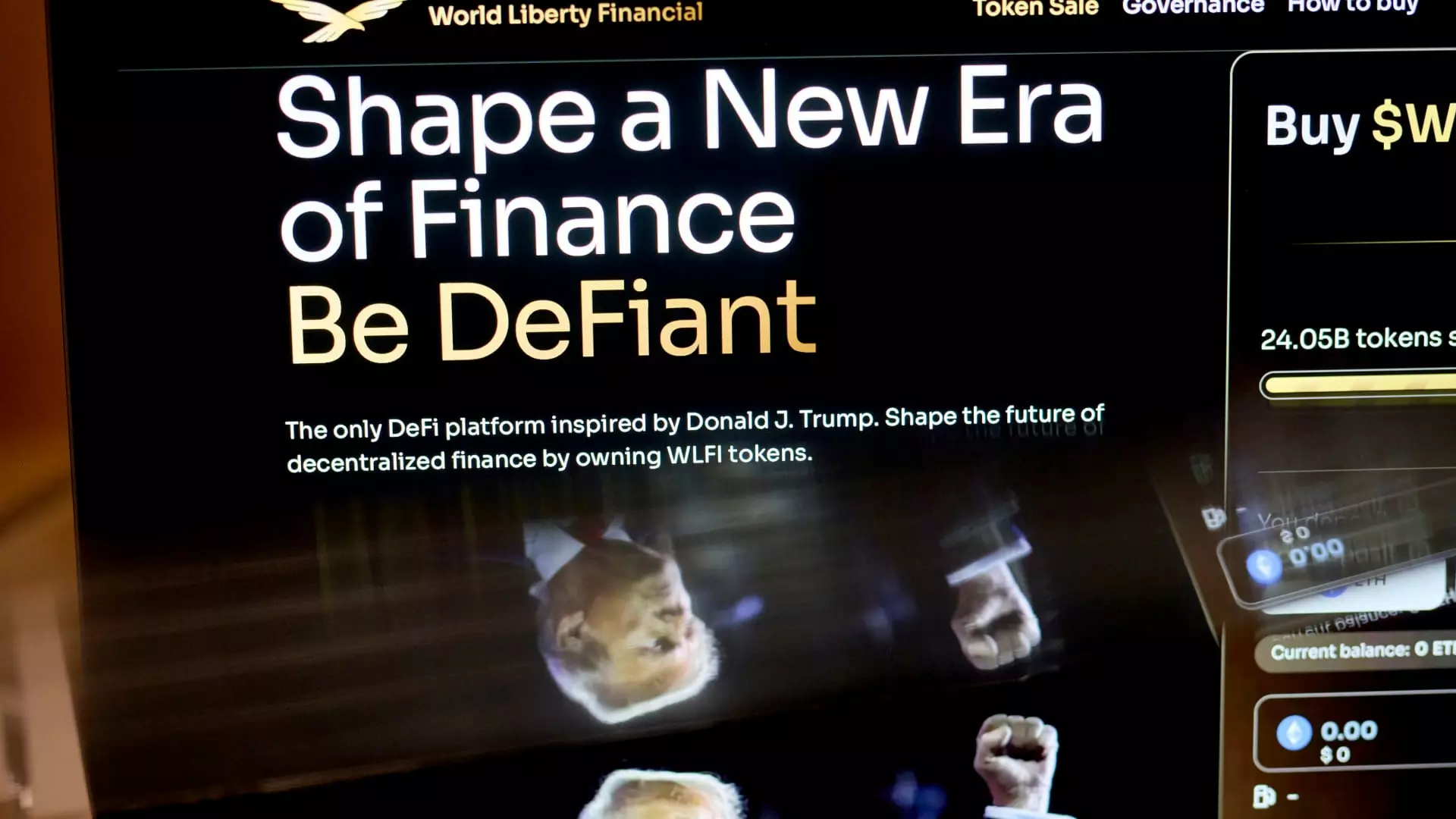The convergence of traditional finance and decentralized finance (DeFi) is seeing a historic moment with the rise of new stablecoins, particularly USD1, backed by the Trump family through World Liberty Financial. With stablecoins increasingly recognized as critical financial instruments, the introduction of USD1 raises several intriguing questions about the future of finance and the political undercurrents shaping it.
Responding to Demand in a Crowded Market
The stablecoin market has exploded in popularity, with dollar-backed tokens achieving a staggering 46% growth over just the past year. Yet, while many projects offer the potential of high liquidity and a peg to the U.S. dollar, they often lack the stability and credibility provided by traditional finance. This is where USD1 seeks to differentiate itself. By relying on short-term U.S. government treasuries and cash equivalents, World Liberty Financial positions its token as a reliable and solid alternative to its competitors like Tether (USDT) and Circle’s USDC.
In a world increasingly characterized by economic unpredictability, the assurance that comes from governmental backing cannot be overstated. With USD1’s design, investors can trust that their assets are managed with a level of oversight rarely found within the volatile crypto arenas. The launch of USD1 is not just a response to consumer appetite; it’s a challenge to the old guard of the crypto industry that has often been cloaked in opacity and risk.
The Political Dynamics at Play
The marriage between cryptocurrency and politics is nothing new, but rarely is it so explicit as in the case of USD1. Backed by a prominent political family, World Liberty Financial includes potential financial benefits for the Trump family, allowing them to capitalize on an emerging market while extending their influence. Notably, entities tied to the Trumps could net as much as 75% of the venture’s earnings, stirring questions about the ethical boundaries of intertwining political power with financial ambitions.
Just as important is the timing of USD1’s launch in relation to current political initiatives. With President Trump recently unveiling plans for a Strategic Bitcoin Reserve and other pro-crypto directives, the project stands to benefit from a favorable political climate. These intertwining timelines reveal a coordinated strategy to revolutionize the financial landscape, utilizing stablecoins as a cornerstone for promoting the dominance of the U.S. dollar in global markets.
DeFi’s Next Evolutionary Step
Stablecoins like USD1 are emerging as critical components in the DeFi ecosystem, particularly for their practicality in cross-border transactions. Designed to facilitate seamless exchanges, USD1 provides institutions with a tool to transact safely and efficiently, conceptually merging the robust safeguards of traditional finance with the agility of decentralized networks. The term “supercharge DeFi” is not just a catchy phrase but a promise that could encourage hesitant investors to embrace the crypto world.
Moreover, as regulatory frameworks begin to take shape—most notably, the GENIUS Act, aimed at providing a regulatory foundation for stablecoins—the future outlook for USD1 appears increasingly favorable. The bipartisan support for such legislation suggests an understanding among lawmakers of the importance of these financial instruments. Furthermore, traditional banks are anticipated to follow suit, launching their own stablecoins, thereby validating the model introduced by World Liberty Financial.
The Role of Scrutiny and Trust
While the potential of USD1 is compelling, it isn’t without its skeptics. With mounting scrutiny over its financial structure, and lingering questions surrounding its political affiliations, trust remains an essential currency. In the crypto world, the skepticism often serves as a double-edged sword. On one hand, it compels transparency, while on the other, it might hamper adoption among wary investors.
Critics also point to the conflict of interest embedded in the Trump family’s financial stake in the platform. Will the project remain objective and focused on its mission, or will its political connections compromise its ethical standing? The reality is that trust is the backbone of finance. If USD1 falters in cultivating that trust, it risks being swallowed up by alternative stablecoins that maintain a cleaner image and clearer separation from political machinations.
Crossroads of Innovation and Regulation
As we navigate a transformative economic landscape driven by digital assets, the emergence of USD1 epitomizes a significant turning point. The interplay of innovation, market demand, and regulatory scrutiny creates a complex narrative. It is a classic clash between traditional ethics and modern efficiencies. World Liberty Financial’s bold venture into the crowded market presents a potent opportunity, but it must tread cautiously. The future of DeFi may well hinge on the delicate balance between disruption and responsibility, and USD1 finds itself at the very epicenter of this critical intersection.

